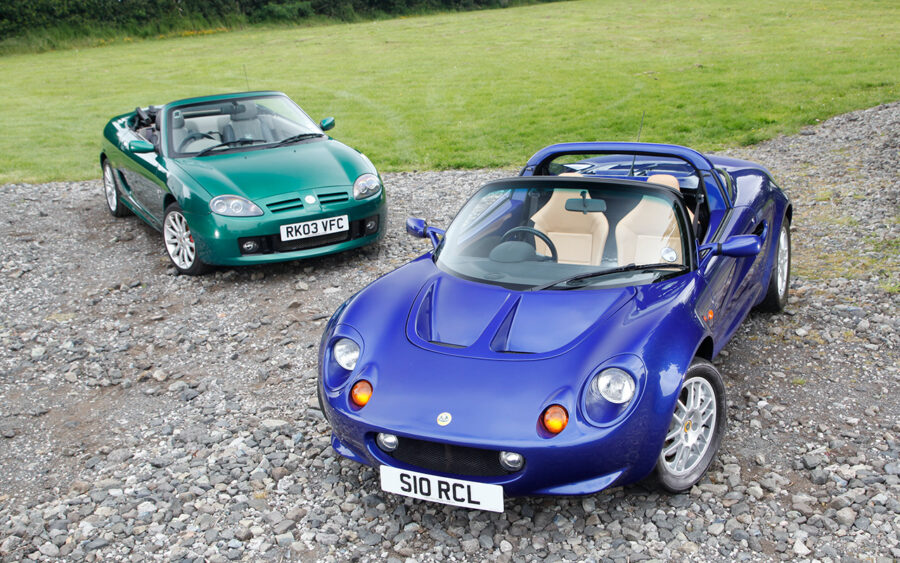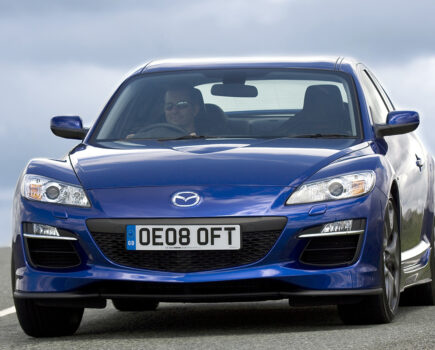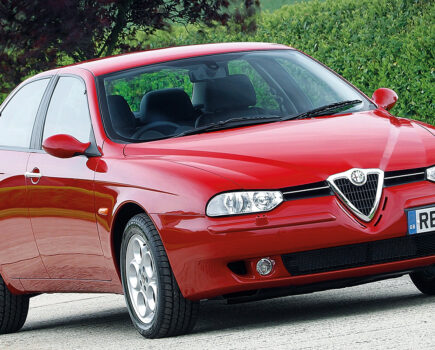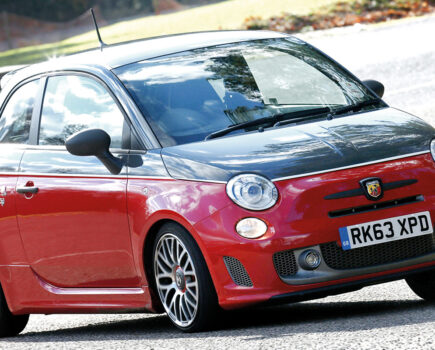There are still loads of fun driver’s cars out there that serve as an antidote to EVs and hybrids. We pick 20 likely heroes to suit every pocket
Sponsored editorial in association with Footman James
Words: Paul Wager
Best driver’s cars for £2000
MG TF
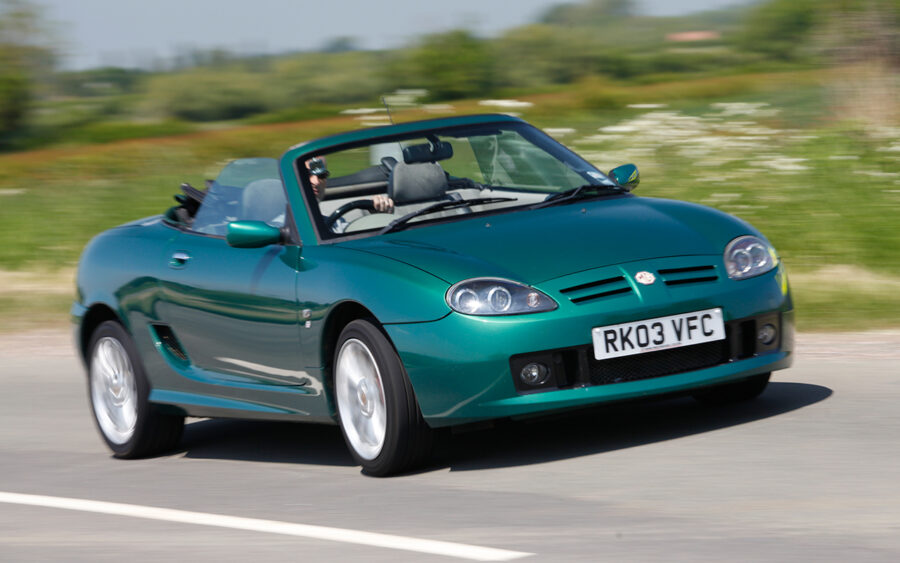
Very much a Marmite car, but there are those who consider the mid-engined MG to be a better sports car than the MX-5 and certainly at the bargain end of the market the MG is likely to be far more solid than the Mazda.
The transition from F to TF saw the MG lose the Hydragas fluid suspension in favour of steel coils and it’s a far more focused car as a result, almost like a junior Elise. They weigh just over a tonne and in 135bhp form, livened up further with a suitable remap a TF is quick enough to surprise cars costing far more. On decent tyres, the mid-engined layout means superb handling but without the snappy limits of something like the MR2.
Insider tip: Don’t believe everything you hear about K-Series head gaskets; most problems are caused by coolant loss. Just replace the underfloor coolant pipes with stainless parts and keep an eye out for leaks.
Mazda MX-5
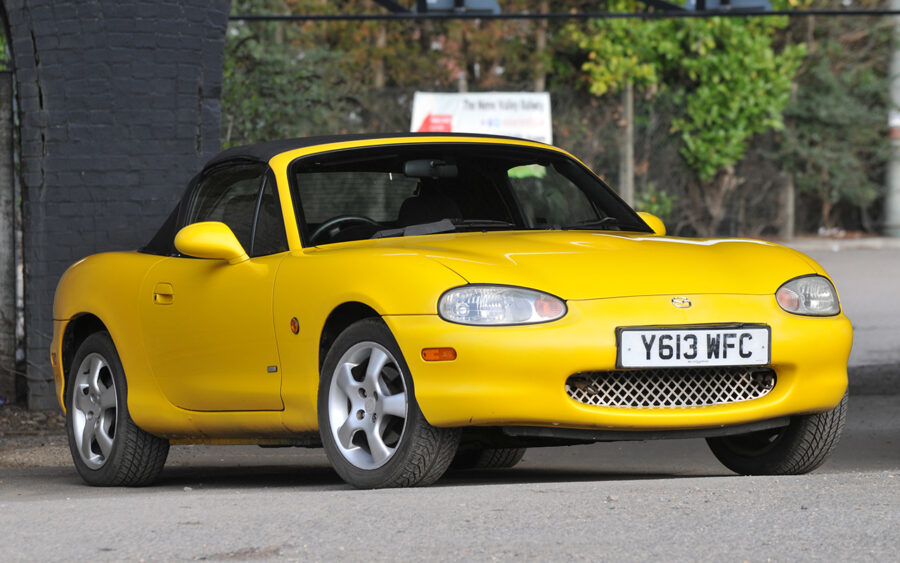
As the MX-5 has gained bona fide classic status, standard tidy Mk1 ‘NA’ cars have become prized to the point where two grand is project money, which means you’re looking at the ’97-on ‘NB’ Mk2 model. Effectively a major facelift of the original, the NB offered a usefully larger boot, glass rear window and much improved bodyshell rigidity as well as a slightly less basic interior.
It may be more practical than the original but curiously the Mk2 car rusts more than the Mk1: watch out for obvious issues like crusty arches, rotten sills and floors but also hidden problems with corroded ‘chassis’ legs at the front end where access can make repair tricky and expensive.
Insider tip: Euro-spec 1.6 models were a bit tame at 108bhp but the grey imported JDM cars are rated at 125bhp.
MINI R50
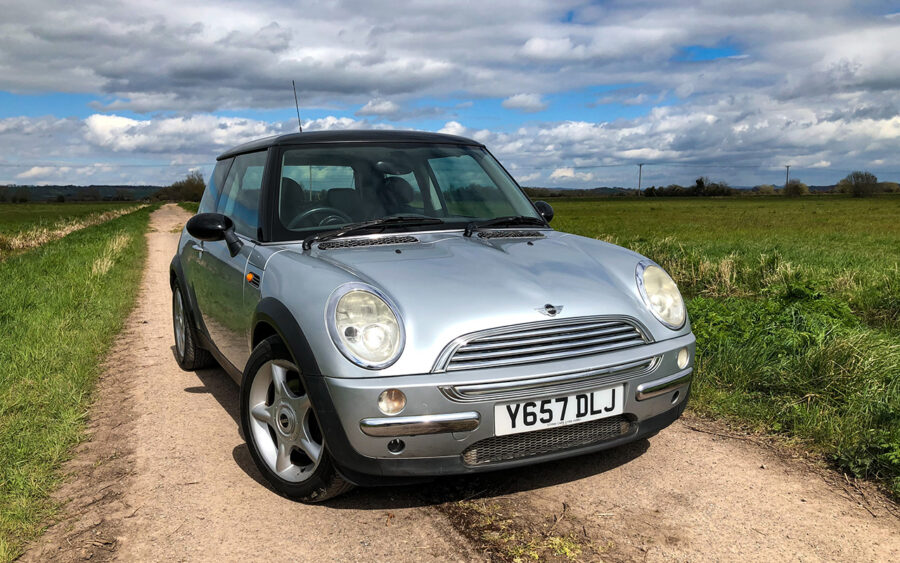
The car we used to know as the ‘new Mini’ is now old enough to be a classic in its own right and devotees of the reborn brand reckon the original ‘R50’ model (allegedly R for Rover in place of parent company BMW’s more usual E numbers of the time) was the better driver’s car, even if the more polished second generation better suited its premium ambitions.
Launched in 2001, the MINI (BMW prefers you to use the capitals) was offered with just a single engine, the 1.6-litre Brazilian ‘Tritec’ unit also found in the Dodge Neon and Chrysler PT Cruiser. Only detail differences and ECU mapping separated the entry-level 90bhp MINI One and the 115bhp Cooper.
The go-kart feel and general fun factor means that even the standard One is great fun to row along, but it’s a simple job to uprate it to Cooper power and beyond – we once fitted a performance exhaust and intake to a MINI One and after a trip to the rolling road it was producing 145bhp. The supercharged Cooper S offered from 2003 is an absolute blast with its blower whine recalling the drop gear of tuned classic Minis, but enthusiast appeal means a budget of £2000 is the bottom of the market for nice unmodified examples.
Insider tip: The July 2004 facelift replaced the fragile Rover gearbox with a Getrag unit. Later cars squeak and rattle less too.
The brave choice: Alfa GTV
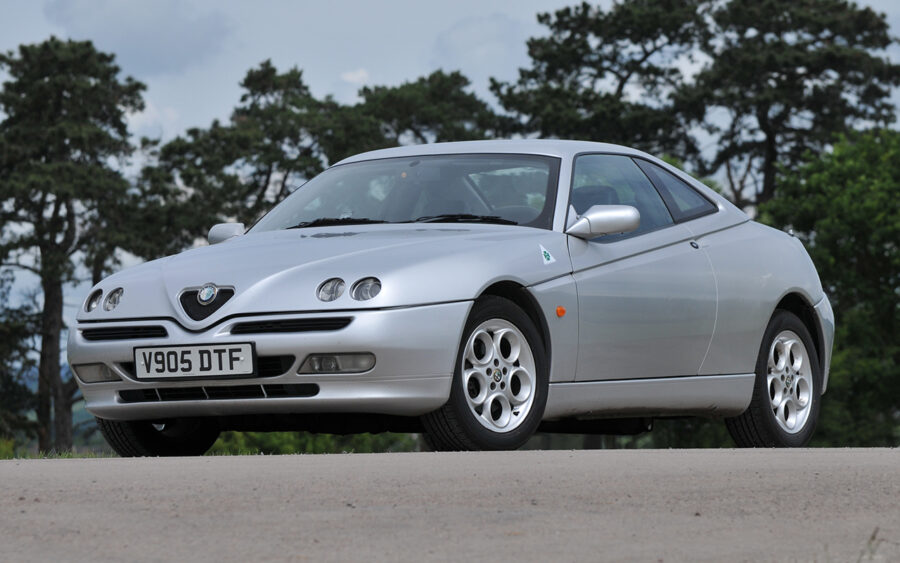
You can’t discuss driver’s cars without including at least one Alfa Romeo and the ‘916’ GTV introduced in 1994 shortly after its Spider sibling was the start of a new era for Alfa. An all-new design, it shared elements of its platform with the Fiat Coupe and used Fiat-derived engines but Alfa insisted on adding a multi-link rear suspension.
Build quality is in a different league from older Alfas and a well set-up example is a joy to drive, with sharp turn-in, lovely poise and real character. The V6 models are more powerful but the GTV is at its best with the lighter four-cylinder155bhp Twin Spark engine in the nose. The downside is typically erratic parts support from Alfa so make sure it’s not your only car. Some things never change…
Best driver’s cars for £5000
VW Golf GTI Mk5/6
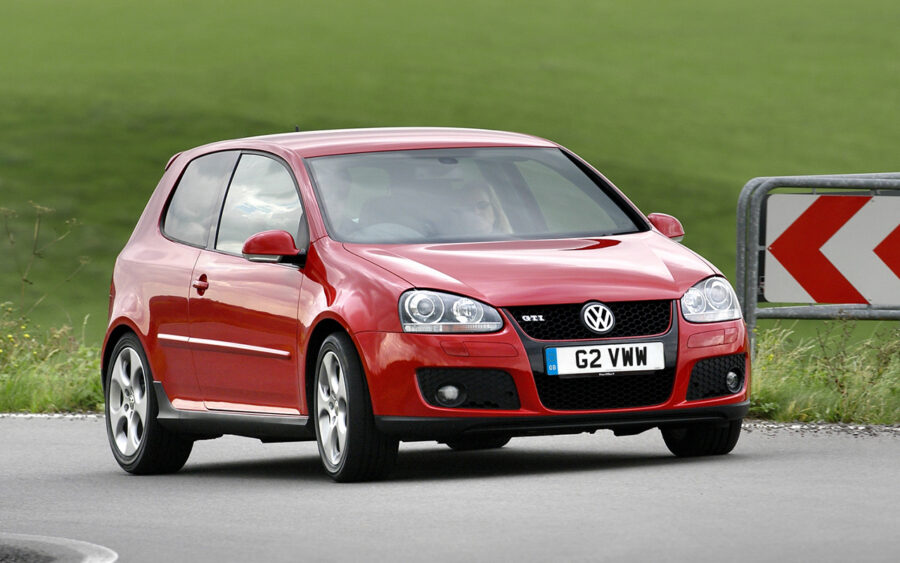
After the underwhelming Mk4 GTI, the fifth generation was a real return to form. It was only in later life that a turbo had given the Mk4 performance worthy of the badge and this was the key to the Mk5 which deployed a 2-litre 16-valve unit with VW’s ‘FSI’ direct injection for a nice round 200bhp. The Mk5 also gained independent rear suspension in order to keep up with the Focus and a bodyshell claimed to be some 80 per cent more rigid, adding up to a car which felt more grown-up.
With a kerb weight of just 1336kg and 207lb.ft torque from just 1800rpm the result was predictably rapid cross-country pace, especially with the new dual-clutch DSG gearbox although a six-speed manual was also offered.
The Mk5 evolved into the Mk6 in 2008, effectively a heavy facelift addressing the few niggles of the Mk5 but with the GTI very little changed. Our advice would be to buy on condition rather than age: a tidy Mk5 with nice history is a better bet than a dog-eared Mk6.
Insider tip: watch out for rusty front wings, caused by a piece of foam installed at the factory.
Porsche Boxster
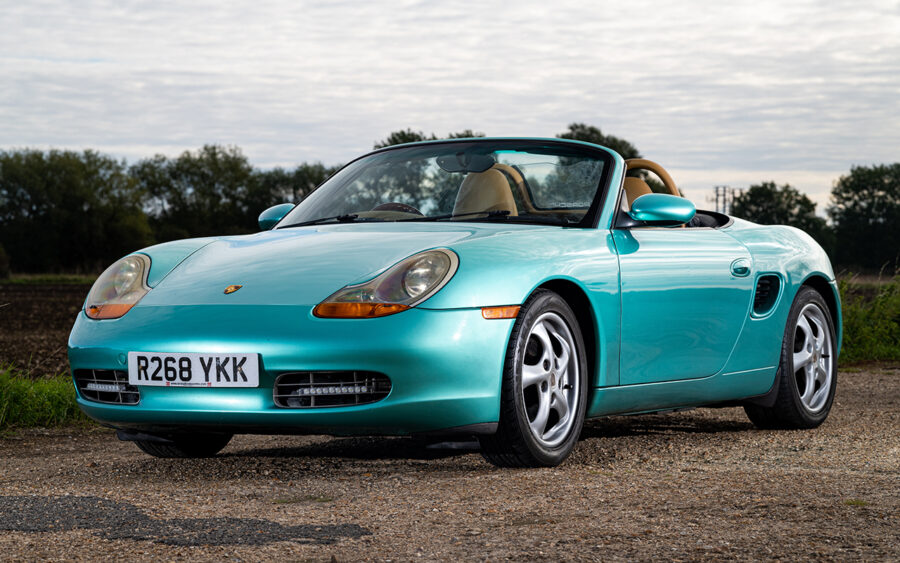
Yes, really. In fact you can pick up a Boxster for far less than this but you probably don’t want to. The earliest ‘986’ models are now nearly 30 years old and values are all over the place, with a five grand budget sufficient to bag a nice cared-for example from long-term ownership but also a whole heap of trouble. Tread carefully, in other words.
What you’re getting for the money seems like a whole lot of blue chip car: a six-cylinder, mid-engined Porsche which in many ways is the better car than famously tricky-to-handle rear-engined 911. The Boxster shared its M96 engine with the contemporary 996-generation 911 and it was Porsche’s first water-cooled flat six, offering 201bhp from 2.5 litres in the original Boxster. At 1200kg, this meant performance was respectable, with the five-speed manual car sprinting to 60mph in 6.7 seconds. The popular Tiptronic – actually just a regular torque converter automatic with a manual gear selection facility – was notably slower but still a brisk car.
From 2000, the standard engine was enlarged to 2.7 litres with the 3.2-litre Boxster S added to the range and in 2004 the car was replaced by the second-generation 987 model. All of the 986 models are real driver’s cars, with a real planted feel courtesy of the mid-engined layout, a superb soundtrack and practicality which is the equal of a BMW. Two boots also make them surprisingly practical. If the 911 is out of reach then a Boxster is an impressive consolation prize.
Insider tip: The infamous IMS bearing issue has largely been exaggerated and can be sorted by Porsche specialists but check the history to see if the upgrade has been performed.
Ford Focus ST
Dropping a Volvo engine into a mid-range Ford family hatchback might not sound like a recipe for success but the result had a soundtrack like an ’80s Quattro and handling which cemented Ford’s new-found reputation for developing the best driver’s cars in the business.
With 222bhp and 236lb.ft on offer, the Focus ST was a return to the glory days of the RS Turbo and was good for 150mph, with a 0-60 time of just 6.5 seconds. The acclaimed Focus chassis was further improved with the addition of a front strut brace, 30 per cent stiffer springs and 5 per cent uprated anti-roll bars while the car sat 25mm lower on its 18-inch rims and gained 320mm brakes.
Launched in 2005, the ST would last the life of the Mk2 Focus, reappearing in the third generation with a four-pot Ecoboost motor replacing the warbling five-cylinder engine, making the characterful original the one for the enthusiast.
The tuning potential of the turbo motor means there are plenty of modified cars around but there are plenty of standard cars out there too and for a Ford, the cars are pretty robust, although it’s wise to check for bubbling on the sills behind the side skirts. Watch out for smoking and misfires suggesting cracked cylinder liners on pre-2008 cars and remember to check the cam belt has been changed but otherwise the ST lasts well.
Insider tip: If a car is advertised as MP260, it means it received the Ford-approved Mountune upgrade, comprising a bigger intercooler, remap and 256bhp.
The brave choice: Jaguar XKR
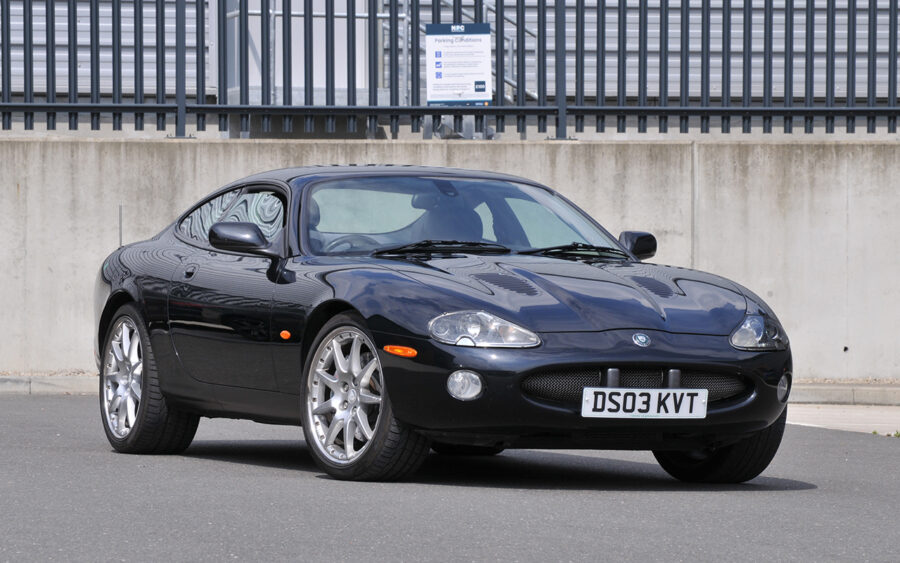
On the face of it, the big V8-engined Jaguar ought to be the sensible choice next to the turbo Ford and VW boy racers or the exotic Porsche… and in many ways it is, but the ‘X100’ XK8 can trip up the unwary.
First, the good news: the 4-litre Jaguar XJ-V8 is all but bulletproof if it’s been kept full of oil and water and in XKR supercharged form turns in a smooth 370bhp – or 400bhp from the later 4.2 – with a delicious hint of supercharger whine. A huge supply of used parts and a network of Jaguar specialists means DIY-minded owners can keep on top of most issues which might arise, but these cars are getting on a bit now and as ever with Jaguars, the spectre of corrosion is becoming an issue.
Rusty floorpans are common (caused by a production line fixture left in place which traps dirt and moisture), but in too many cases it will have spread to the sills and arches too. Unlucky cars will also suffer from terminally rotten suspension subframes.
All of which means don’t be seduced by a shiny-looking example or high spec: get under there with a torch and remember, there are plenty of really nice examples around too. If you get a nice one, there’s nothing quite like the refined, muscular performance of the supercharged Jag.
Best driver’s cars for £10,000
Honda S2000
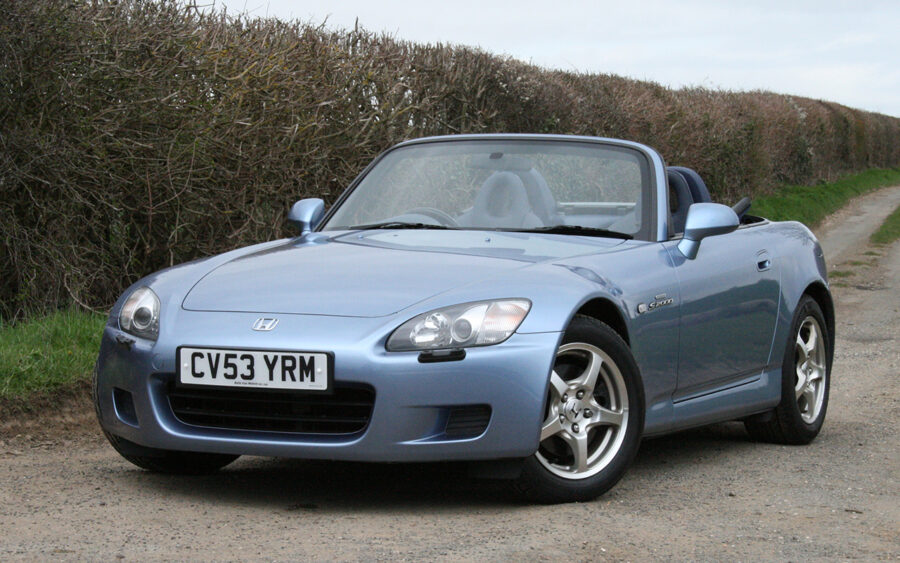
Of all the cars we’ve picked, Honda’s technological tour de force probably has the strongest claim to the title of driver’s car. Described as the Japanese maker’s 50th birthday gift to itself, the S2000 distilled all of Honda’s thinking on engineering elegance into one vehicle, the central feature being a 2-litre four-cylinder engine which produced 240bhp without forced induction – the highest specific output of any production car engine for many years, beating even BMW’s M3.
Key to the power was Honda’s famed VTEC variable valve timing system which operated at higher revs to provide a kick in the back akin to a turbo coming on boost. And when we say high revs, these cars don’t properly come alive until there’s at least 5000rpm wound on to the digital tacho, with the redline at a superbike-style 9000rpm.
All of which means that to get the best from an S2000 you need to set aside all mechanical sympathy and literally drive it like you stole it. And when you do, you discover that the rest of the car is perfectly judged around the powerplant, with a snappy short shift, nimble handling and a lightweight yet exceptionally stiff bodyshell.
The downside is that early ‘AP1’ cars came without traction control, meaning too many ended up the wrong side of the hedge. Many have also been modified in Tokyo Drift fashion, meaning that standard, straight cars are increasingly prized with values rising accordingly. Find a nice one though and you’ll never look at the MX-5 in the same light again.
MINI Cooper S JCW
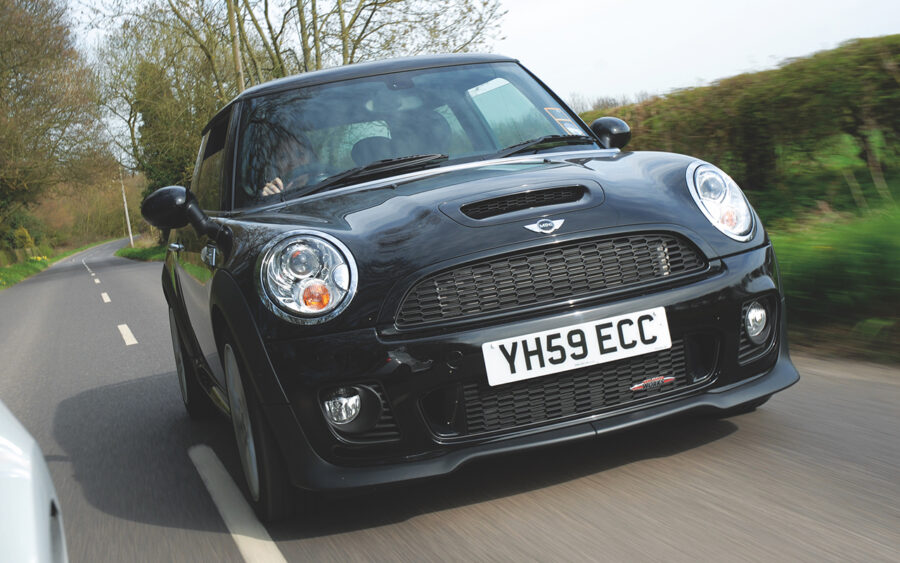
Many may consider the original the better driver’s car but on purely technical grounds the second generation MINI was the better product and in 208bhp John Cooper Works form was something of a junior M car – and indeed was developed by BMW Motorsport.
As such, it’s a superbly complete package which knocks rivals like the RenaultSport Clios out of the water with its blend of punchy turbo performance, solid build and predictable handling. Rather than a dealer-fit package like earlier JCW cars, the R56 generation was a factory-built product and the development work shows in the ease with which its performance can be accessed – mainly due to the 192lb.ft torque on offer from just 1850rpm and 206lb.ft on overboost. A complete contrast to the S2000, you don’t need to drive the doors off the MINI to get the best from it, but the pointy handling still makes it feel like a fun car.
Insider tip: If you need more practicality, the JCW was also offered in Clubman form with a longer wheelbase and estate rear.
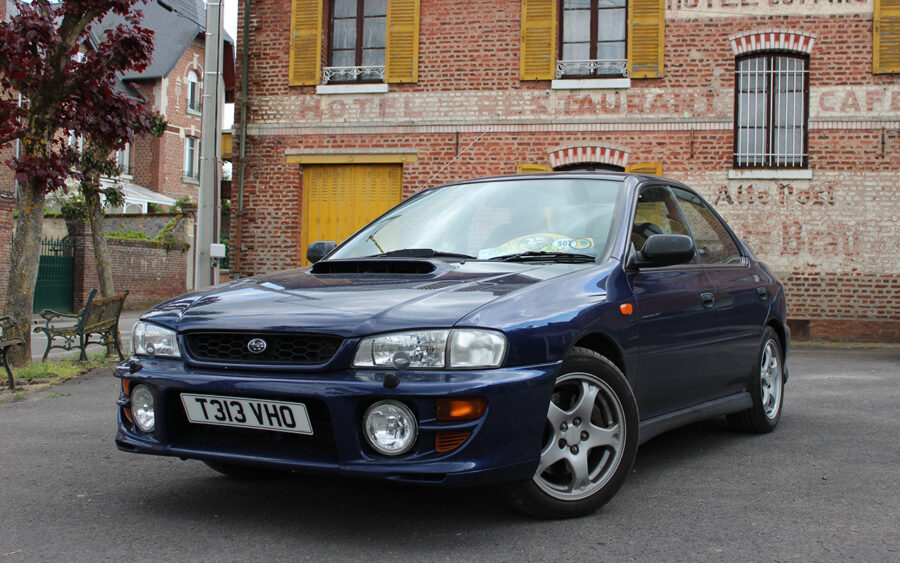
Subaru Impreza
The ‘Scooby’ is so commonly seen in modified form these days that it’s easy to forget how capable the standard car is, whether the classic 1992-2000 ‘GC’ model or the 2004-2006 second generation.
Standard all-wheel drive is key to the Impreza’s appeal and naturally if we’re talking driver’s cars then it’s the turbocharged models which are on the shopping list. If you can find a straight and solid one, the regular 208bhp 2000 Turbo AWD is an engaging performance saloon with the traditional turbo lag adding to the fun and plenty more power on tap from your local remapper, while the WRX STi offers closer to 280bhp.
Apart from questionable styling mods, your biggest enemy will be body rot, especially around the rear quarters where it tends to be hidden but otherwise a well-maintained standard car should be a reliable bet. The Impreza was criticised for its hard cabin plastics when new but these have generally lasted the years better than premium makers’ soft-feel interiors.
If you can’t find a decent example, move up a generation to the 2000-on cars and if you can’t get past the controversial styling then go for a post-2002 car with the softer ‘Blob eye’ styling or the 2005-2007 ‘Hawk eye’ model which is altogether more conventional looking.
Insider tip: The curious-looking estate is actually really practical.
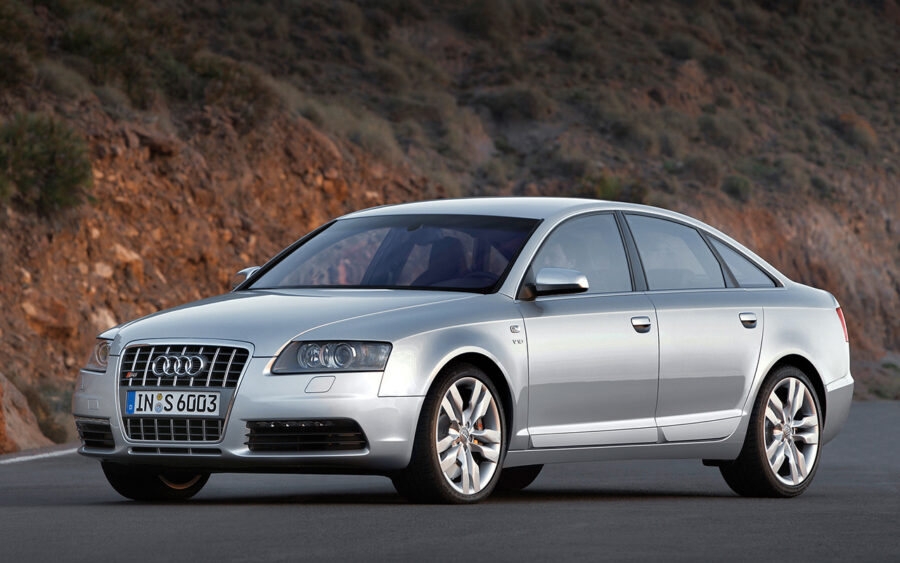
The brave choice: Audi S6
If you want a powerful four-wheel drive turbo saloon then why not go all-in with a 500bhp Audi? Probably because you’ll be buying a miley example of a pretty complex car powered by a 5.2-litre V10 engine.
Yes, the potential for financial disaster is massive but on the plus side, these are quality cars and if you find one with the right history you’ve got a performance icon. We’ve seen them for as little as £7500 but budget on £10,000 for something which will get you home before the drama starts.
Best driver’s cars for £15,000
Porsche 911
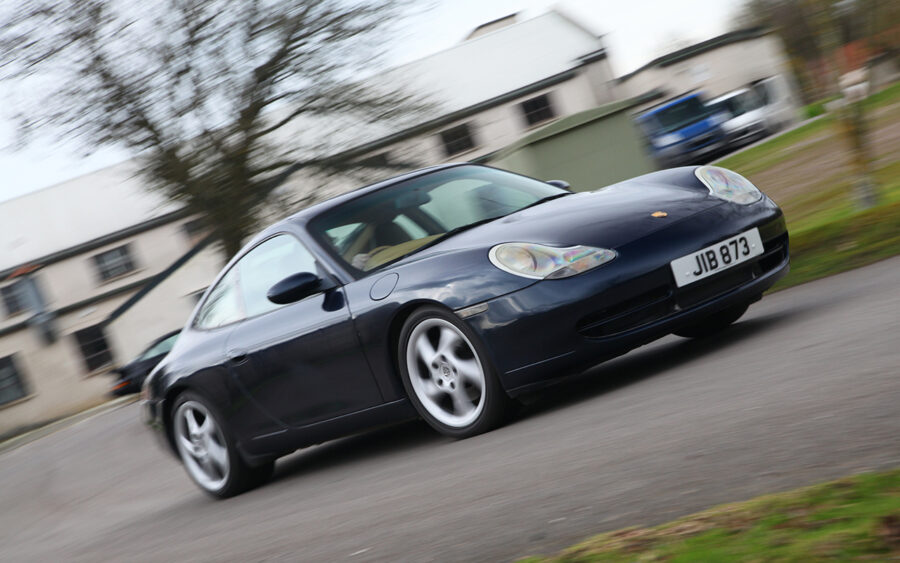
Every generation of 911 seems to appreciate eventually and so it is that the 996, for so long the entry-level car, has reached the bottom of the curve, ready to climb as its place is taken by the 997.
A budget of £15,000 opens up a big choice of early 2000s cars, mostly hovering around the 90,000-mile mark and split fairly evenly between the Carrera 2 and four-wheel drive Carrera 4 and offering a choice of both manual and Tiptronic automatic.
The 911 needs no introduction as a driver’s car and with 300bhp from the 3.2-litre car and 315bhp from the post-2002 3.6-litre cars, they’re all credible performance cars. Adding four-wheel drive tamed the 911’s famously tricky handling but there are those who prefer the nimbler feel of the rear-drive Carrera 2, while the market is similarly split between manual and automatic. Our choice? A 3.6-litre Carrera 2 coupe with the crucial IMS bearing upgrade.
Insider tip: These are high-quality cars so buy on condition and history rather than being sidetracked by low-mileage examples which have sat around unused.
Mitsubishi Lancer Evo
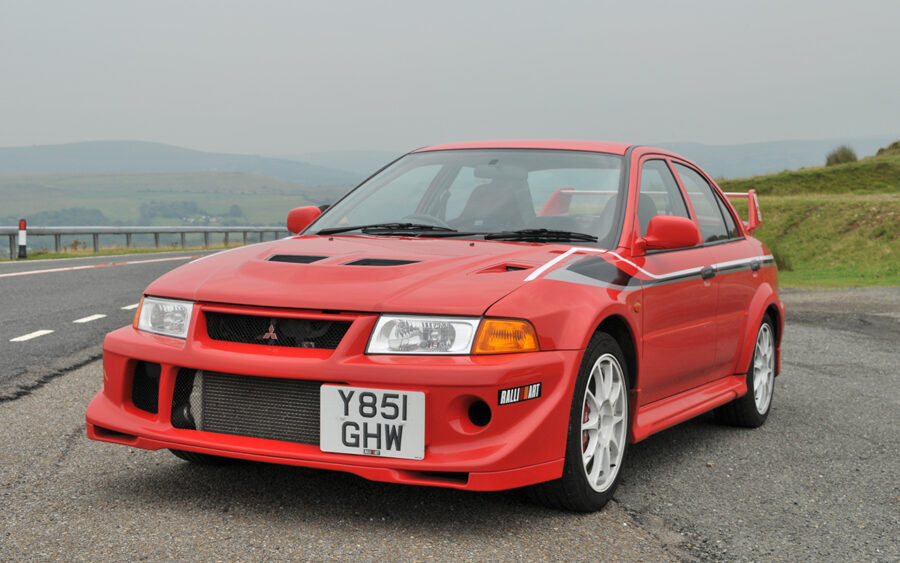
No, your £15,000 budget might not stretch to a MkVI Tommi Makinen – you’ll need another £85k for that – but you can still buy into the Evo magic in its later forms.
People unfamiliar with these cars will naturally tend to compare them with the Subaru Impreza, its contemporary competitor on the international rally stage but in truth they’re very different, the Mitsubishi making the Subaru look somewhat agricultural. The key difference is in the electronics, with the Evo’s Active Yaw Control (AYC) using sensors to electronically control the torque split to each of the rear wheels, while the 2001-on Evo VII added an active centre differential.
In 2003, the Evo VIII became a mainstream model, sold through Mitsubishi UK rather than Ralliart and boasting an upgraded AYC system and six-speed box. The big news was that the informal agreement on power outputs had been binned, meaning the regular model offered 276bhp and later ‘FQ’ models were up to 340bhp. The Evo IX arrived in 2005 featuring much of the same and in March 2008 an all-new model arrived in the UK as the Evo X which is what you’ll be looking at with a £15,000 budget.
The UK range comprised the 280bhp GS or the GSR SST, which featured Mitsubishi’s ‘Sportronic Shift Transmission’ dual-clutch gearbox, with the usual ‘FQ’ variants including FQ-300, FQ-330, FQ-360 and FQ-400, plus the 40-off limited edition FQ-440 MR swansong.
The majority of cars for sale are the FQ-300 and you’re looking at around 80,000 miles for this money, but as with all cars of this kind, the market values the increasingly rare original examples.
One thing’s for certain though: there’s little to touch an Evo of any kind for cross-country pace and as a driver’s car it flatters the unskilled so well that it’s one of our favourites.
Lotus Elise
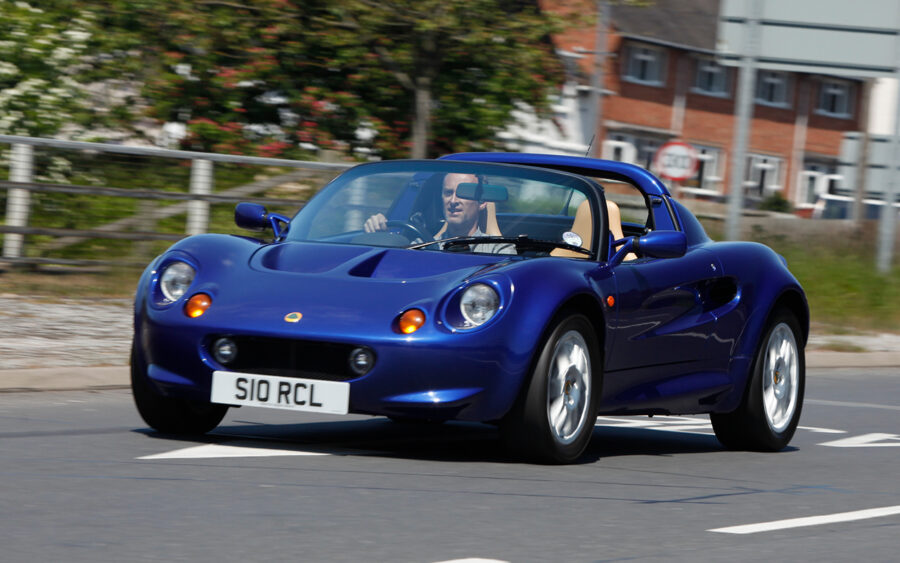
As a pure driver’s car, the Elise is right up there with the S2000, although it majors more on minimalist engineering than high tech. Central to the concept is a lightweight aluminium monocoque which meant that with a kerb weight of just under 800kg nothing more than the humble K-Series shared with the MGF was needed to provide sparkling performance. Naturally, the mid-engined layout and light weight mean handling is exemplary and really it’s the closest you’ll get to something like a Caterham or Westfield without the intimidating nature of those cars.
The Elise is also usefully more practical than any of the Seven-style cars, with a proper roof and creature comforts like a heater, while its typically Lotus chassis set-up makes it a surprisingly comfortable prospect for longer trips. There’s even a small boot to put your sandwiches in.
A Series 2 car was introduced in 2001, initially with the Rover engine but from 2005 using a Toyota engine shared with the Celica and the car would continue until the Series 3 arrived in 2010, which itself would live until 2021.
A budget of £15,000 gives you a wide choice of Series 1 and Series 2 cars with reasonable mileage from enthusiastic owners and with the market increasingly valuing early cars, an Elise should prove to be a sound investment.
The brave choice: Maserati 4200GT

It’s the closest thing you’ll get to a Ferrari… which is both a good and a bad thing, but it does have the kudos of running a Ferrari V8. More commonly known as the 4200GT, the Maserati Coupe was an evolution of the earlier 3200GT, replacing the older car’s smaller twin-turbo V8 with the 4.2-litre Ferrari engine rated at 390bhp. Think of it as a kind of Italian Jaguar XK8.
The Coupe was available as a six-speed manual or an automated manual ‘Cambiocorsa’ and naturally, the one you want is the manual.
Best driver’s cars for £20,000
BMW M3
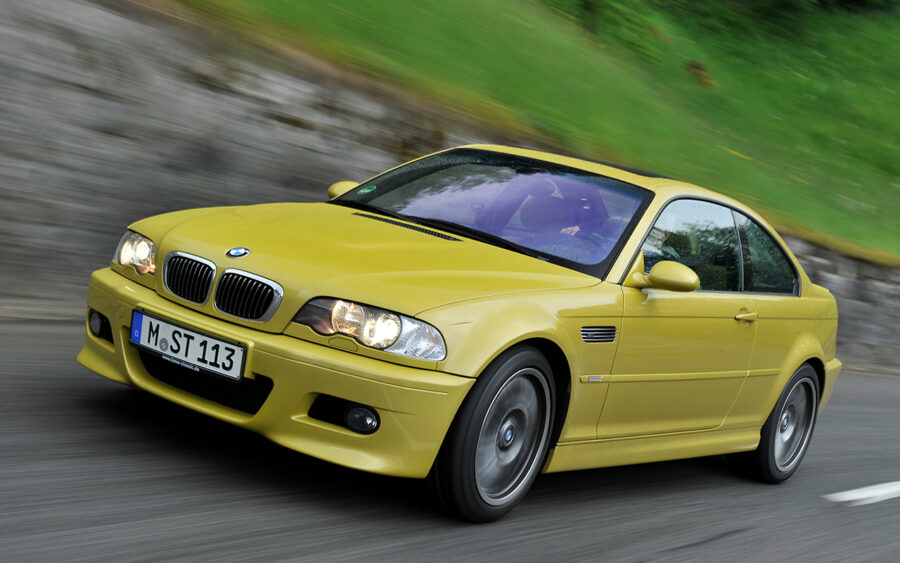
Now here’s a choice for you: the BMW M3 is justifiably regarded as one of the greatest drivers cars around but a budget of £20,000 gives you a choice of two very different generations.
First, you have the ultimate six-cylinder M3 in the shape of the E46 generation which was produced from 2000 until 2006 and is one of the world’s great cars. For this money you have a pick of really nice cars, both SMG and manual and both coupe and convertible, but you’ll also find the later E92 generation creeping into searches.
The first M3 to use a V8 engine, the E92 is savagely quick and like the E46 was also offered with a choice of either manual or automated manual, except that the clunky SMG was replaced by BMW’s own dual-clutch ‘DSG’ box under the name M DCT.
Impressive though it is, somehow the V8 car has so far failed to grab the enthusiast attention in the way the E46 did, so only time will tell if it will join the ranks of iconic M cars. For now though, our money would go on the E46 M3 coupe, preferably in manual form.
Insider tip: If you can’t find a nice manual to suit you, then BMW specialists can convert SMG cars.
Aston Martin DB9
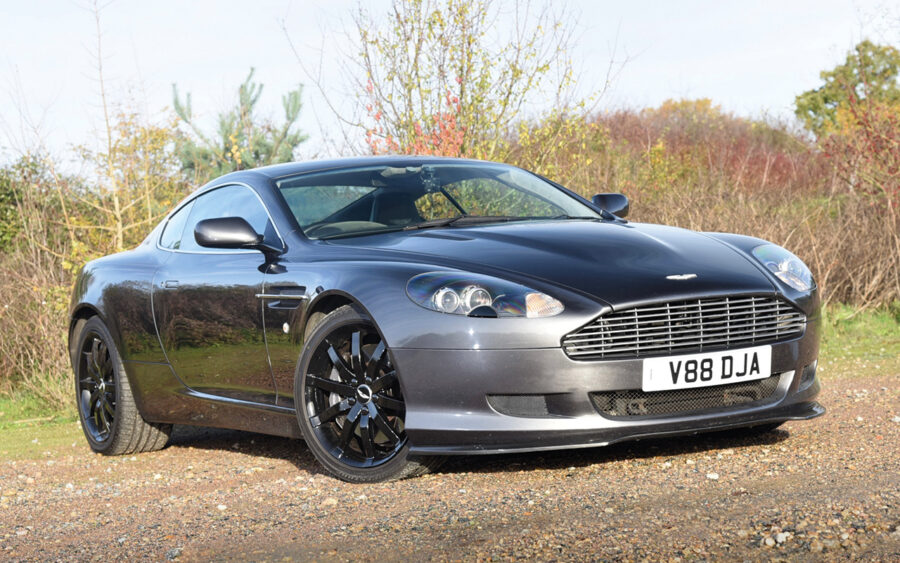
If you’ve looked at the DB7, laughed at the MX-5 door handles and Escort heater controls and decided that Aston isn’t for you, then the DB9 launched in 2004 deserves you to reconsider. After all, the DB8 name was skipped for a reason, that primarily being to draw a line between the parts-bin Jaguar-based car and its all-new successor.
With distinctive styling by Henrik Fisker and an all-new aluminium platform similar in its basic concept to the Elise, the DB9 was as modern as the DB7 was ancient and it was powered by the 450bhp 6-litre V12 engine developed for Aston by Ford. Using a rear-mounted transaxle gearbox gave the car 50/50 weight distribution which meant handling a world away from the nose-heavy DB7.
The DB9 was offered as both a proper manual and a Touchtronic automatic, with a Volante convertible added in 2005 and production would continue until 2016 with an interior facelift in 2008 and a more extensive revision in 2013, by which time the V12 was up to 510bhp.
A budget of £20,000 secures an early DB9 coupe but you’ll only get two pedals at this money. For a manual you’ll need to raise the budget closer to the £38,000 mark.
Insider tip: Early cars can suffer from the dreaded Aston V12 ‘tick’ and you’ll find the info online. Later German-made engines are thought not to suffer.
Jaguar F-Type V6 S
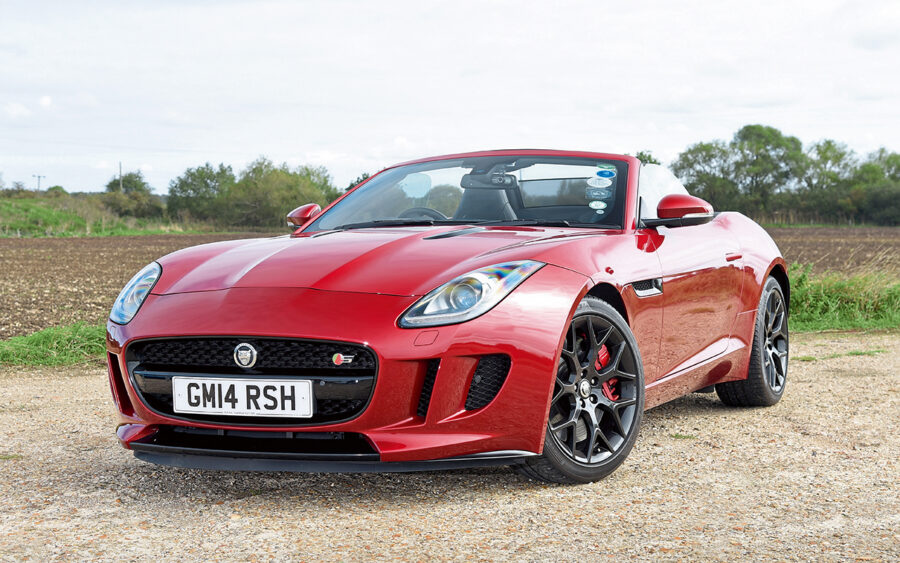
As launched in 2013, the F-Type coupe was initially offered in either V8 or V6 flavours, the supercharged 3-litre V6 available in 340PS or 380PS ‘S’ form. Like the XK and XK8 before it, Jaguar’s sports car for the modern era was initially offered in automatic-only form, using the eight-speed ZF box, a conventional torque converter automatic which offers commendably fast shifts – if not quite as snappy as a DSG-style box – combined with suitable refinement.
In 2015 though, a ZF six-speed manual was introduced as an option, using the transmission also found in turbocharged six-cylinder BMWs. The manual option could be ordered only on the V6 models, in which form the F-Type became the first six-cylinder, two-seater, manual Jaguar since the XJ-S 3.6 of 1983.
With 380bhp on tap in a car weighing in at 1597kg, the F-Type V6S manual is a rather more electrifying prospect than its ’80s predecessor and is a really underrated car. Less savage than the V8 yet still a fast car by any measure, it’s a real driver’s car and shows just how great Jaguar can be when allowed to shine. Sadly, the F-Type will disappear this year and won’t be replaced, but that does mean a nice one may well be a sound investment and a budget of £20,000 is just enough to secure one.
Insider tip: The manual car is underrated at present but eventually will be the one the collectors want.
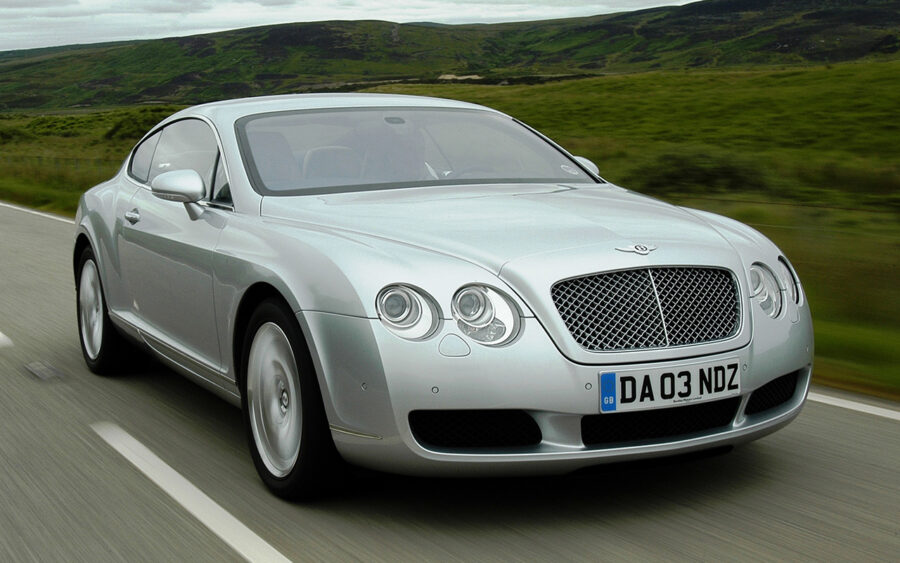
The brave choice: Bentley Continental GT
You might think a 2.4-tonne, four-wheel drive luxury grand tourer has no place in a feature on driver’s cars but the Continental GT – the first Bentley developed under VW ownership – is a surprising beast. It’s also yours from £15,000 upwards.
With twin turbochargers strapped to its 6-litre W12 engine (basically two VR6 motors), it’s good for 552bhp and the four-wheel drive does make it incredibly capable. No, it’ll never be an Elise but the air suspension and adjustable damping does make it surprisingly nimble. It’s also utterly outrageous and a nicely sorted one is a tremendous thing. Oh and the official top speed is 198mph.
Sponsored by Footman James Insurance
At Footman James we know that classic vehicles are so much more than the nuts and bolts that keep it together or the engine that keeps the wheels turning – they’re a lifestyle, a time capsule of cherished memories and an absolute labour of love.
Our classic vehicle insurance policy comes complete with a whole host of benefits such as shows & events cover and cover for your trips to Europe (up to 35 days, restrictions apply). But we also understand that owners are as unique as they vehicles they need to insure, which is why we created FJ+.
FJ+ is a host of additional options you can choose from to tailor your policy to your exact requirements. These include: Breakdown Cover provided by the RAC, Agreed Value, Nil Deduction Salvage Retention, Legal Protection and more.
So whether you have a classic vehicle, a combination of classic and modern vehicles or a multi-million pound collection – we have an insurance policy to suit your requirements.
Visit our website for an instant quotation or to request a call back

